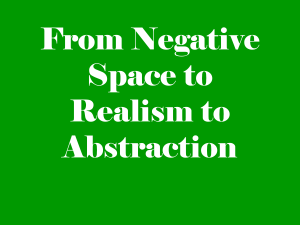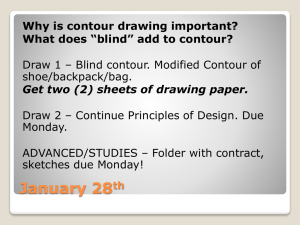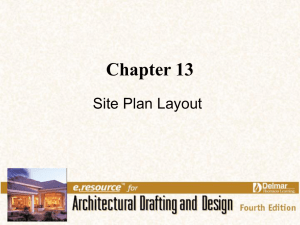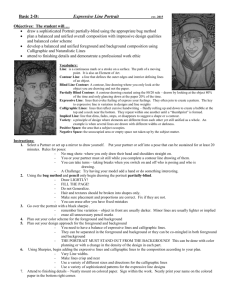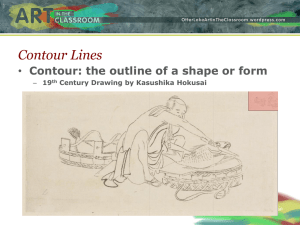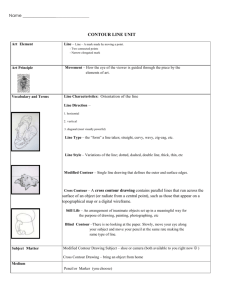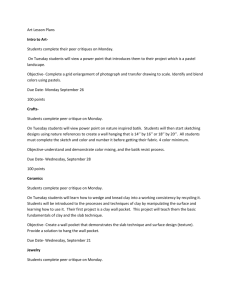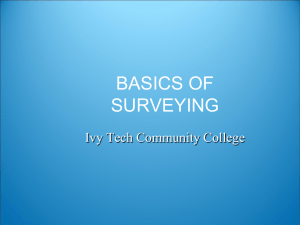Full Contour Drawing
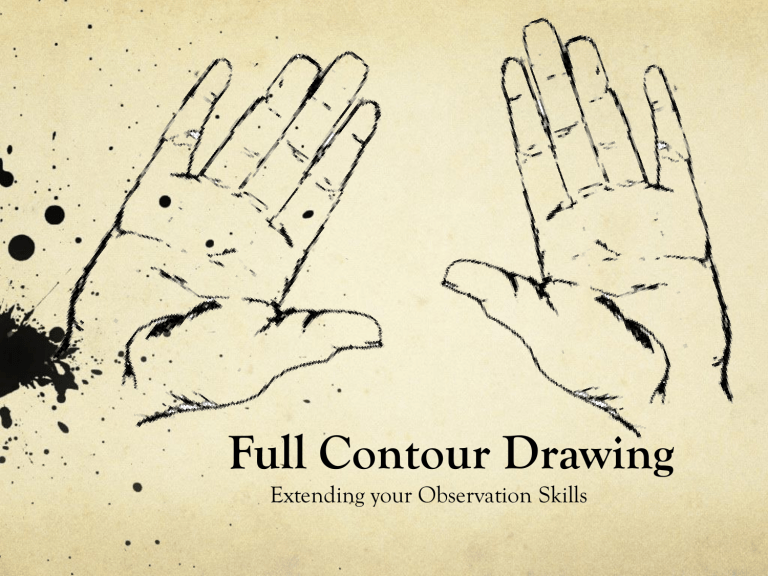
Full Contour Drawing
Extending your Observation Skills
Full Contour
Vs.
Blind Contour
Just like blind contour drawing, full contour drawing builds your observational skills.
In blind contour, you observe and record. In full contour you observe, record, critique, & correct.
This adds the thinking about your work back into the drawing.
Self Critique
The first new step is a self critique.
You start your full contour drawing the same as a blind contour.
The new step is to stop every inch or so and look at the drawing.
Compare the 2-D line you drew to the actual implied line/contour of your object.
If the mark on the paper appears correct, observe the object, and continue the line.
Correct your drawing with
Observation
The corrections should take place before you erase the mistake.
Corrections should be done while observing the object being drawn. Do not look at the paper when making a correction.
When a correction is complete, erase the lines that were in error.
It’s OK if it takes a few corrections to get a line right!
Foreshortening
& Overlapping:
Although these two concepts are not unique to contour drawing, we will be dealing with them during this drawing.
Foreshortening is a technique used to create the illusion of an object receding strongly into the distance or background.
Overlapping is when parts of an object are hidden from sight by another, closer object.
Overlapping techniques add depth to your work by positioning some objects behind others.
What to Do?
• No looking down when your pencil is drawing!
• No “sketchy” lines.
• Try to observe every detail and record it.
• Stop every inch or so to self critique your work.
• Make corrections as necessary.
• Erase mistakes.


